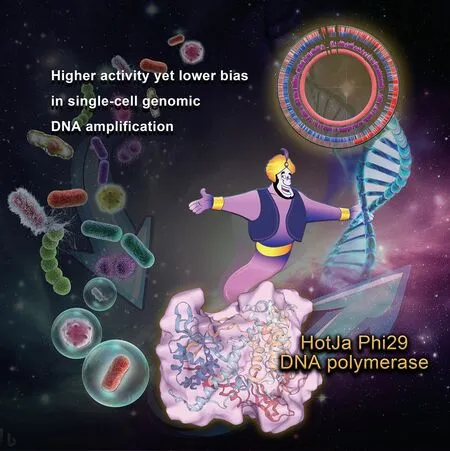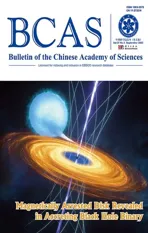Bacterial Single-cell Whole Genome Sequencing Overhauled by Engineered Polymerase
2023-11-15KONGFengru
Sequencing the genome of single bacterial cells has long been technically difficult due to the seemingly incorrigible bias in the gene amplification stage of the process, making it hard to produce a high-coverage genome sequence from precisely just one bacterial cell.
A new process developed by researchers at the Single-Cell Center, Qingdao Institute of Bioenergy and Bioprocess Technology (QIBEBT) of the Chinese Academy of Sciences (CAS), however, greatly reduces that bias, opening up whole new vistas of single-cell research.
The study was published inFrontiers in Bioengineering and Biotechnologyon June 29.
It is normal when using traditional gene sequencing methods to use millions of cells at the same time.However, such sequencing of cells in bulk inevitably obliterates differences between cells, making it difficult to explore relationships amongst different cell lineages or perform any other kind of research that depends upon the consideration of a single cell at a time.Such technological challenges are particularly grave for bacteria, since a bacterial cell is so small that its DNA content is several orders of magnitude lower than a human or animal cell.
In order to perform sequencing of genes or whole genomes, DNA first has to be “amplified”.Gene amplification, sometimes called “molecular photocopying”, can make millions or even billions of copies of DNA segments.
Amplification poses few problems for bulk gene sequencing.However, in bacterial single-cell DNA amplification, particularly of whole genomes, the amount of DNA available for copying is very limited, and the amplification process can introduce biases that overrepresent or under-represent different regions of the genome.

Improved single-cell genome amplification by a high-efficiency HotJa Phi29 DNA polymerase (Image by LIU Yang)
“Reducing amplification bias has been something of a holy grail for single-cell genome amplification researchers,” said ZHANG Jia, a biotechnologist with QIBEBT and lead author of the paper.“And we think we’ve now found a way to tackle this problem.”
The researchers developed a process called Improved Single-cell Genome Amplification (iSGA).It primarily involves protein engineering as well as process engineering to the amplification ability of the phi29 DNA polymerase.The phi29 DNA polymerase is commonly used in single-cell whole genome amplification but suffers from problems of low genome coverage and low efficiency.
“The iSGA phi29 DNA polymerase we developed is more than twice as efficient and robust than the conventional phi29 DNA polymerase,” said ZHANG Jia.“It’s also almost eleven times cheaper than the main commonly available commercial version.”
The researchers achieved this by engineering the polymerase to boost its amplification ability.Using a method called compartmentalized self-replication (CSR)to evolve the phi29 DNA polymerase, they modified its structure to enhance its activity, specificity, and stability.“The newly developed DNA polymerase, what we called HotJa Phi29 DNA polymerase, shows significantly better genome coverage (99.75%) at a higher temperature(40℃) compared to existing commercial polymerases,”said Prof.XU Jian from Single-Cell Center of QIBEBT,one of the senior authors.
They also optimized the amplification reaction conditions and modified the amplification buffer (the solution that provides a suitable chemical environment for the DNA polymerase) to improve the stability and activity of the phi29 DNA polymerase.Additionally, the researchers developed a more efficient decontamination method to reduce contamination during the amplification process.
The researchers now plan to optimize their iSGA method and HotJa Phi29 DNA polymerase across various applications and sample types and reduce costs further.The team has developed a series of instruments,including RACS-Seq, FlowRACS and EasySort for functional sorting of microbial single-cells.Their goal of developing these instruments and reagents is to enable microbiologists to sort and sequence any individual microbial cells on the Earth without worrying about data quality or reagent cost.
杂志排行
Bulletin of the Chinese Academy of Sciences的其它文章
- Could Gut Bacteria Hold a Cure for Sepsis?
- Looking into the Tissue Adjacent to Tumors
- Daya Bay Collaboration Awarded 2023 High Energy and Particle Physics Prize by European Physical Society
- Largest Optical Time-domain Survey Telescope in Northern Hemisphere Goes into Operation
- CAS Paleogeneticist Awarded UNESCO Prize
- “Magnetically Arrested Disk”Revealed by Multiwavelength Observation
